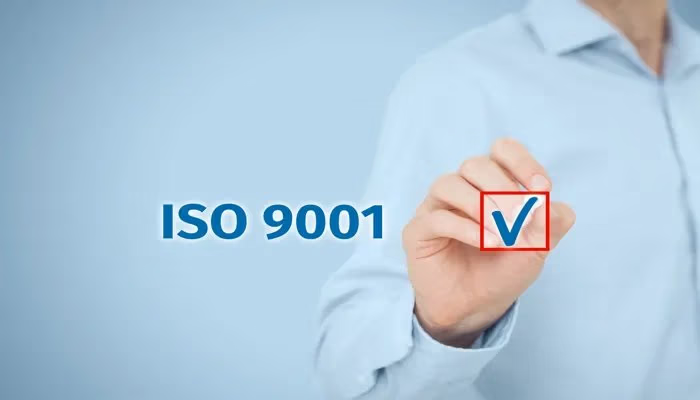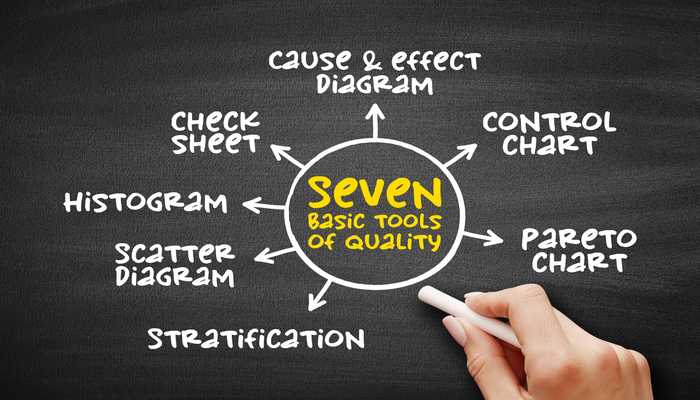Summary: A Quality Management System (QMS) is essential for organizations striving to deliver high-quality products and services consistently. The core elements of a QMS, including leadership, planning, support, operation, performance evaluation, and improvement, work together to ensure quality objectives are met. ISO 9001 provides a globally recognized standard for implementing a QMS, helping organizations achieve customer satisfaction, continual improvement, and compliance with industry regulations. By implementing a QMS, organizations can reap the benefits of improved quality, enhanced customer satisfaction, and increased operational efficiency.
What Constitutes a Quality Management System (QMS)?
A Quality Management System (QMS) comprises a series of guidelines, workflows, and practices that an organization adopts to deliver top-quality products and services. It offers an approach to maintaining quality standards while ensuring that customer demands are met in line, with industry norms and regulations.
The significance of ISO 9001
ISO 9001 an acknowledged standard sets forth requirements, for a Quality Management System (QMS) promoting product quality, continual enhancement, and adherence. Being certified indicates a dedication to quality boosting credibility in the market. The integration of ISO 9001 improves a company’s QMS by ensuring customer satisfaction, regulatory conformity, and ongoing advancement.
This standard is part of the ISO 9000 series. Offers guidance to organizations in establishing, executing, and sustaining quality management systems. It covers aspects such as quality planning, control management, and data handling to foster a culture of quality within an organization. Organizations seeking ISO 9001 certification aim to showcase their commitment to assuring and enhancing quality.
How can you ensure seamless ISO 9001 document control?
Rely on a powerful EQMS
Key Components of a Quality Management System
A structured QMS comprises six elements that collaborate to consistently achieve the organization’s quality goals. Let’s delve into each of these components in detail;
Leadership
Leadership plays a role in establishing and upholding a QMS. Senior management must exhibit their dedication to quality by setting goals defining quality policies and offering the resources and backing, for QMS implementation.
Planning
The planning aspect involves defining quality objectives and identifying the processes.
To establish a quality management system (QMS) it is important to understand customer needs set quality targets and create strategies to achieve them.
Support
Supporting the QMS involves providing resources, infrastructure, and skilled staff to implement and sustain quality processes. This includes training employees and documenting procedures. Ensuring access, to resources for quality initiatives.
Operation
The operational aspect focuses on carrying out planned quality processes and procedures. It covers product design, production, service delivery, and process control. Implementing controls ensures the consistency and reliability of products and services.
Performance Evaluation
Assessing performance is crucial for gauging the effectiveness of the QMS. This step entails monitoring performance indicators conducting audits and collecting data to evaluate performance against quality goals. Regular evaluations help pinpoint areas, for improvement and drive enhancements of the QMS.
Improvement
Continuous improvement is a component of a QMS. Organizations should continuously strive to enhance their processes, products, and services. This involves analyzing data addressing nonconformities implementing measures and nurturing an environment of innovation and learning within the organization.
QMS Implementation
Successfully implementing a QMS requires planning and execution. Here are a few steps to consider;
Setting Quality Goals
Begin by identifying quality goals that align with your organization’s objectives. These goals should be measurable, realistic, and time-bound.
Recording Processes
It is crucial, to document procedures and processes to ensure consistency and clarity in tasks. Develop a quality handbook that outlines the organization’s quality policies, procedures, and operational instructions.
Employee Training and Skills
Offer training to employees to ensure they grasp their roles and responsibilities related to quality. Encourage a culture of competence and ongoing learning to improve the skills and knowledge of your workforce.
Internal Audits
Regularly conduct audits to evaluate the effectiveness of your Quality Management System (QMS). Internal audits help pinpoint areas for improvement, compliance issues, and potential risks.
Review by Management
Schedule periodic management reviews to assess the performance of your QMS. During these reviews, senior management should evaluate the accomplishment of quality goals review audit results, and decide on actions for enhancement.
Various Types of Quality Management Systems
Organizations have options for implementing a QMS. Here are three common types;
Conventional Paper-Based QMS
A paper-based QMS involves utilizing documents like manuals, procedures, and records, for managing quality processes. While this method may be effective, for companies it could become challenging and burdensome to uphold as the organization expands.
Digital Quality Management System
A digital QMS replaces paper-based records with files offering benefits like simplified document management, version control, and quick information retrieval. This system can be implemented through shared network folders, internal websites, or specialized document management software.
QMS Tools
QMS tools offer a solution for overseeing all aspects of a quality management system. These tools include features for document management training coordination, audit oversight, and performance monitoring. They streamline operations enhance collaboration and ensure adherence to quality standards.
Advantages of Quality Management Systems
Deploying a QMS based on the ISO 9001 standard brings advantages for organizations such as;
- Enhanced product and service quality
- Improved customer satisfaction levels
- Increased operational effectiveness
- Better risk mitigation strategies
- Adherence to industry regulations and norms
- Fostering a culture of enhancement
- Gaining a competitive edge in the marketplace
- Boosting employee involvement and morale levels
ISO 9001 Quality Management System Standard
ISO 9001 stands as the recognized standard, for quality management practices. It furnishes organizations with a structure to establish, implement, maintain, and continuously enhance their QMS. Attaining ISO 9001 certification showcases an organization’s dedication to quality excellence and its ability to consistently meet customer needs.
The standard emphasizes principles such, as customer orientation, the process approach, and continuous enhancement. It covers areas like leadership, planning, support, operations, performance assessment, and enhancement to assist companies in reaching their quality goals.
Common Challenges Encountered When Implementing a Quality Management System
Establishing a Quality Management System (QMS) can pose difficulties for businesses. Some typical hurdles include;
- Resistance to change; Staff may push back against processes and protocols.
- Limited resources; Insufficient resources can impede QMS implementation and upkeep.
- Lack of commitment from management; Without backing from leadership the QMS may not receive the necessary attention.
- Complex documentation; Creating documentation for processes and procedures can be time-consuming and overwhelming.
- Employee. Competence; Ensuring that employees are well-trained and proficient in quality processes can be a task.
FAQ | Quality Management System
What is Total Quality Management (TQM)?
Total Quality Management (TQM) is a comprehensive management approach focused on continuous improvement of quality across all areas of an organization. Unlike traditional quality management systems, which often target specific processes, TQM emphasizes creating a company-wide culture of quality, with all employees actively participating in the improvement process.
What is the purpose of a QMS?
QMS helps organizations establish and maintain processes to deliver high-quality products and services consistently (f.e. QMS in manufacturing). It focuses on customer satisfaction, continual improvement, and compliance with industry standards.
What are the core elements of a QMS?
The core elements of a QMS are leadership, planning, support, operation, performance evaluation, and improvement. These elements work together to ensure quality objectives are met consistently.
How does ISO 9001 benefit organizations?
ISO 9001 provides a framework for organizations to implement a QMS. Achieving ISO 9001 certification demonstrates an organization’s commitment to quality, enhances its reputation, and brings benefits such as improved quality, customer satisfaction, and operational efficiency.
How do you implement a QMS in an organization?
Implementing a QMS involves setting clear objectives, choosing a framework (like ISO 9001), and securing leadership support. Key steps include assessing current processes, training employees, and establishing ongoing monitoring. Regular audits ensure continuous improvement and compliance.
How can quality management software help businesses?
Quality management software (QMS) helps businesses by ensuring they meet customer requirements and improve customer satisfaction. It enables organizations to deliver products and services that meet or exceed customer expectations through the implementation of effective quality processes and continuous improvement. When comparing QMS vs eQMS, an eQMS extends these capabilities by digitizing and automating quality processes, enhancing efficiency, traceability, and compliance management.
Is it necessary to use QMS software?
Image: Adobe Stock – Copyright: © jirsak – stock.adobe.com





